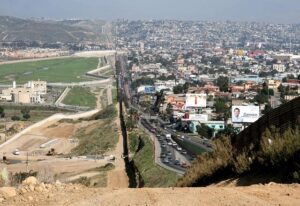How Immigration Enforcement is Reshaping Texas’ Labor Market
The Federal Reserve Bank of Dallas has recently drawn attention to the connection between stricter immigration enforcement and the deceleration of job growth in Texas. New federal initiatives aimed at curbing unauthorized employment have tightened the labor pool, especially in sectors heavily dependent on immigrant workers. This contraction in available labor has disrupted Texas’ historically vigorous economic expansion, with industries such as construction, farming, and hospitality facing mounting challenges in recruiting and retaining staff. These difficulties have, in turn, slowed business growth and reduced overall productivity.
Notable labor market consequences include:
- Constrained labor availability leading to slower recruitment
- Rising wage demands as companies compete for a shrinking talent pool
- Increased operational expenses due to compliance and hiring efforts
- Delays in supply chains affecting production schedules
| Industry | Job Growth Before Enforcement (%) | Job Growth After Enforcement (%) |
|---|---|---|
| Construction | 3.6 | 1.1 |
| Agriculture | 3.0 | 0.6 |
| Hospitality | 4.3 | 1.4 |
Dallas Fed Analysis: Immigration Crackdown’s Role in Slowing Employment Growth
The Federal Reserve Bank of Dallas has underscored that the recent intensification of immigration enforcement is a key factor behind the slowdown in Texas’ job market expansion. Their latest economic review reveals that sectors reliant on immigrant labor—such as construction, hospitality, and manufacturing—have experienced significant declines in hiring activity. This shift has altered labor market dynamics, creating operational hurdles for businesses that previously benefited from a steady influx of immigrant workers under more lenient immigration policies.
The Dallas Fed highlights several critical elements:
- Decreased labor force availability limiting production and service capacity.
- Escalating compliance and recruitment costs burdening employers.
- Geographic disparities with border regions facing the most acute effects.
Recent employment data illustrates these trends:
| Industry | Employment Change (%) | Severity of Impact |
|---|---|---|
| Construction | -4.5% | Severe |
| Hospitality | -3.0% | Moderate |
| Manufacturing | -2.1% | Moderate |
| Retail | -0.7% | Mild |
Declining Workforce Participation and Recruitment Challenges in Texas
Economic indicators reveal a marked drop in workforce participation rates across Texas, closely linked to the enforcement of stricter immigration policies. Employers report growing difficulties in filling roles traditionally occupied by immigrant labor, particularly in construction, hospitality, and agriculture. These sectors are experiencing higher employee turnover and longer vacancy durations, which disrupt operational efficiency and threaten to slow the state’s economic momentum.
Indicators of labor market strain include:
- Decline in job applications for both entry-level and skilled positions
- Average hiring periods extended by approximately 25% compared to previous years
- Increased dependence on temporary staffing agencies, often at premium rates
| Sector | Year-over-Year Vacancy Rate Increase | Average Days to Hire |
|---|---|---|
| Construction | 9% | 46 |
| Hospitality | 13% | 39 |
| Agriculture | 11% | 43 |
Strategic Policy Approaches to Balance Immigration and Economic Growth
In light of Texas’ slowing employment growth, experts advocate for a balanced policy framework that supports both immigration reform and economic vitality. The Federal Reserve Bank of Dallas emphasizes that overly stringent immigration enforcement has disrupted labor market equilibrium, especially in sectors dependent on immigrant workers. To mitigate these challenges, policy recommendations focus on retaining critical workforce talent while fostering economic competitiveness across industries.
Recommended policy initiatives include:
- Expanding and streamlining visa programs tailored to labor needs in agriculture, construction, and service industries.
- Creating clearer, more accessible pathways for legal immigration to alleviate workforce shortages.
- Promoting workforce development programs that integrate native-born and immigrant workers to enhance skills and productivity.
| Policy Component | Anticipated Outcome |
|---|---|
| Visa Program Expansion | Broader labor pool, reduced hiring delays |
| Legal Immigration Pathways | More stable workforce, improved labor market flexibility |
| Workforce Training Incentives | Enhanced skill levels, increased economic productivity |
Conclusion: Economic Implications of Immigration Enforcement in Texas
In summary, the Federal Reserve Bank of Dallas identifies recent immigration enforcement efforts as a significant factor contributing to Texas’ sluggish job growth. As the state navigates these labor market challenges, it is crucial for policymakers and business leaders to weigh the economic consequences of immigration policies carefully. The evolving situation highlights the need for a balanced approach that safeguards enforcement priorities while sustaining Texas’ economic dynamism and workforce stability.







